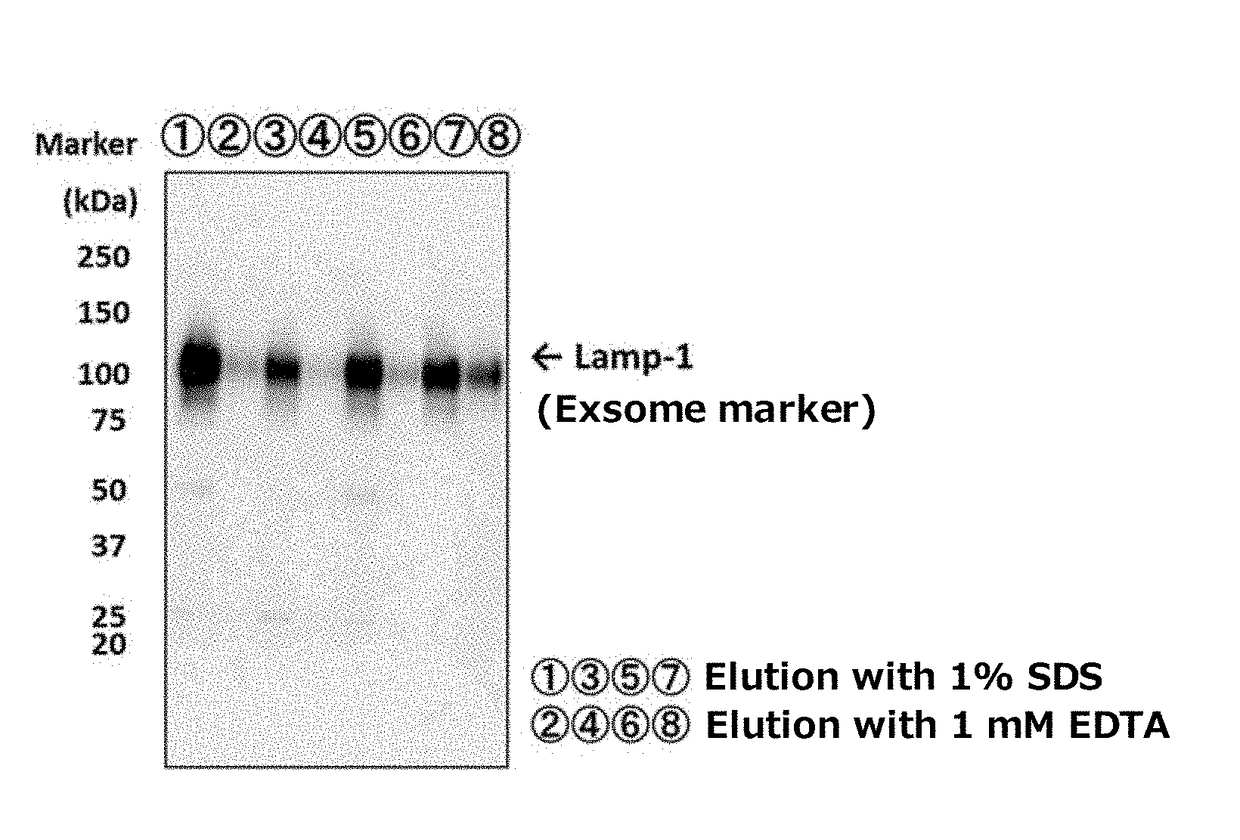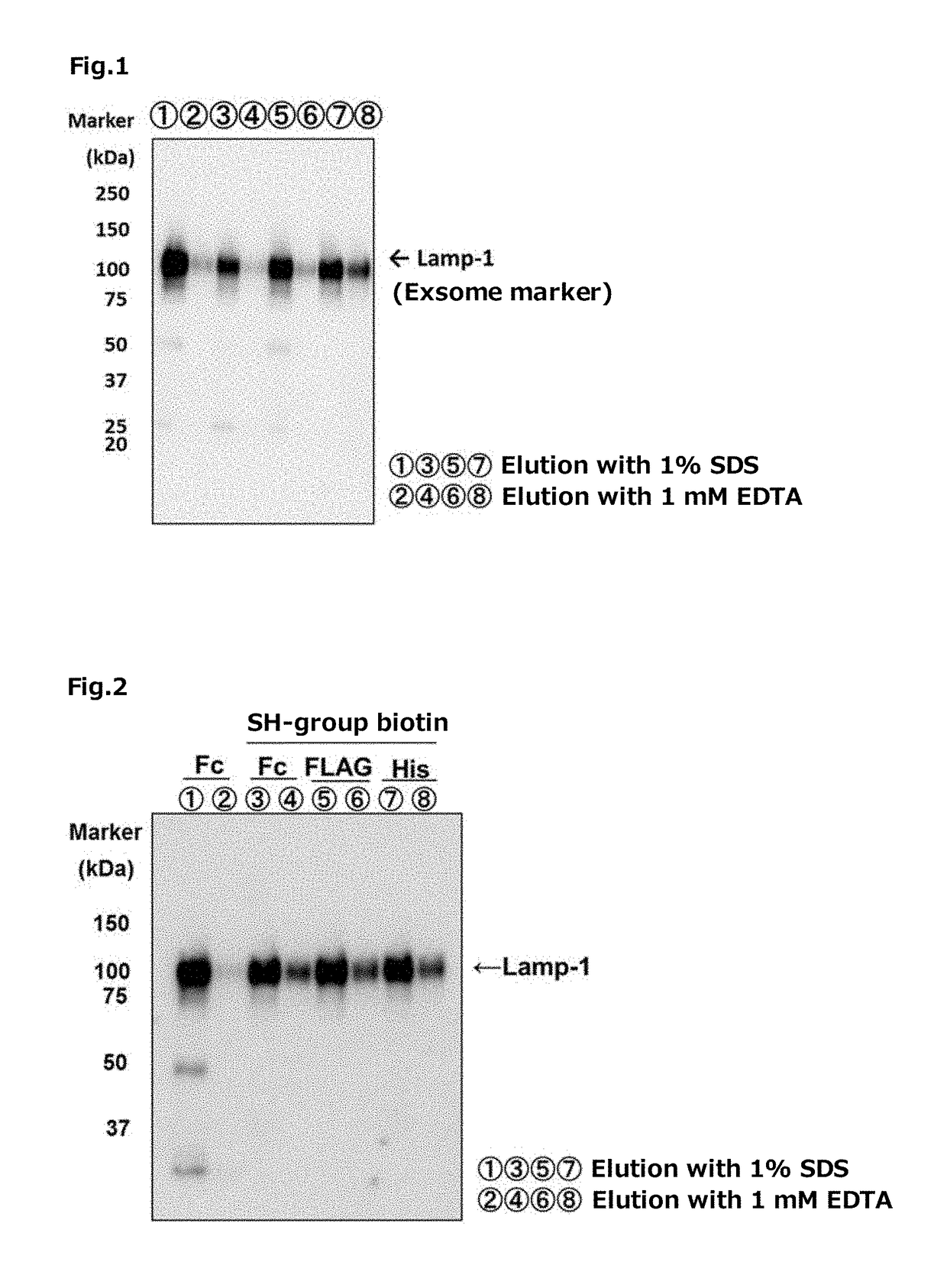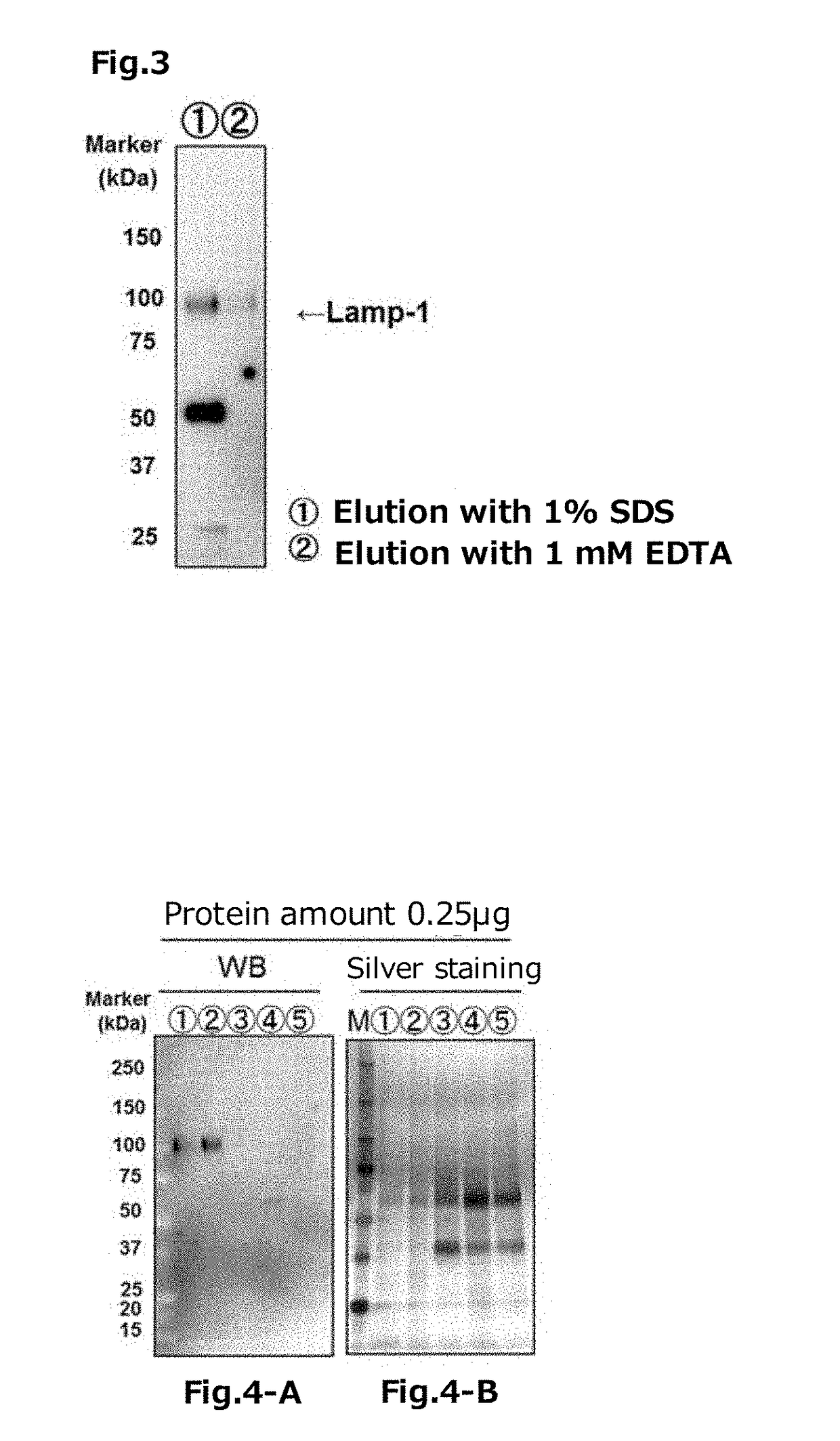Tim protein-bound carrier, methods for obtaining, removing and detecting extracellular membrane vesicles and viruses using said carrier, and kit including said carrier
- Summary
- Abstract
- Description
- Claims
- Application Information
AI Technical Summary
Benefits of technology
Problems solved by technology
Method used
Image
Examples
experimental example 1
Fusion Type Tim-4 Protein
[0346]The Fc tag fusion type Tim-4 protein was prepared by the following method.
[0347]First, a vector was constructed for expression of the Fc tag fusion type Tim-4 protein in which a cDNA (SEQ ID NO: 26) encoding the N-terminal 1 to 273 amino acid region of a mouse-derived Tim-4 protein was incorporated into the Sall-EcoRV site of a pEF-Fc vector (hereinafter it may be abbreviated as “the pEF-Tim-4-Fc”, in some cases).
[0348]On the other hand, 293 T cells (RIKEN BRC) were each cultured for 1 day using 25 sheets of 150 mm dishes for cell culture, using 20 mL of DMEM (produced by Nacalai Tesque, Inc.) containing 10% FBS (produced by BioWest Co., Ltd.). Thereafter, for each dish, 25 mL of DMEM containing 10% FBS was replaced with 25 mL of FBS-free DMEM.
[0349]Thereafter, 20 μg of the pEF-Tim-4-Fc was transfected into each of 293 T cells, using Polyethylenimine “MAX” (produced by Polysciences Inc.), according to a usual method. After transfection, the 293 T cells...
experimental example 2
g Fusion Type Tim-4 Protein
[0353]The FLAG tag fusion type Tim-4 protein was prepared by the following method.
[0354]First, a FLAG tag fusion type mouse-derived Tim-4 protein cDNA (a cDNA encoding an amino acid sequence fused with 1×FLAG at the C-terminal of the N-terminal 1 to 273 amino acid region of the mouse-derived Tim-4 protein, SEQ ID NO: 33 (containing a stop codon (taa) and a nucleotide sequence encoding 1×FLAG, in this regard, however, excluding the restriction enzyme site), produced by Fasmac Co., Ltd.), was incorporated in an XhoI / BamHI site of a pCAG-Neo vector (produced by Wako Pure Chemical Industries, Ltd.) to construct a vector for expressing the FLAG tag fusion type Tim-4 protein (hereinafter it may be abbreviated as “the pCAG-Tim-4-FLAG”, in some cases).
[0355]On the other hand, the 293 T cells (RIKEN BRC) were cultured for 1 day using 50 mL DMEM (produced by Wako Pure Chemical Industries, Ltd.) containing 10% FBS (produced by Biosera) in a 225 cm2 flask by seeding, ...
experimental example 3
Fusion Type Tim-4 Protein
[0358]The His tag fusion type Tim-4 protein was prepared by the following method.
[0359]The His tag fusion type mouse-derived Tim-4 protein cDNA (a cDNA encoding an amino acid sequence fused with 6×His tag at the C-terminal of the N-terminal 1 to 273 amino acid region of the mouse-derived Tim-4 protein, SEQ ID NO: 34 (containing the stop codon (tga) and a cDNA encoding 6×His tag) was incorporated in the XhoI / BamHI site of the pCAG-Neo vector (produced by Wako Pure Chemical Industries, Ltd.) to construct a vector for expressing the His tag fusion type Tim-4 protein (hereinafter it may be abbreviated as “the pCAG-Tim-4-His”, in some cases).
[0360]On the other hand, the 293 T cells (RIKEN BRC) were cultured for 1 day using 50 mL of DMEM (manufactured by Wako Pure Chemical Industries, Ltd.) containing 10% FBS (produced by Biosera) in a 225 cm2 flask. Thereafter, 60 μg of the pCAG-Tim-4-His was transfected into the 293 T cells using Lipofectamine 2000 (produced by ...
PUM
 Login to View More
Login to View More Abstract
Description
Claims
Application Information
 Login to View More
Login to View More - R&D Engineer
- R&D Manager
- IP Professional
- Industry Leading Data Capabilities
- Powerful AI technology
- Patent DNA Extraction
Browse by: Latest US Patents, China's latest patents, Technical Efficacy Thesaurus, Application Domain, Technology Topic, Popular Technical Reports.
© 2024 PatSnap. All rights reserved.Legal|Privacy policy|Modern Slavery Act Transparency Statement|Sitemap|About US| Contact US: help@patsnap.com










